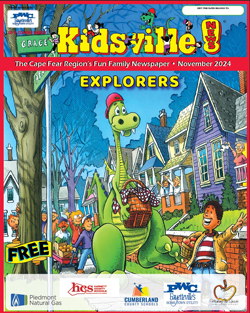 What is North Carolina’s bestknown and most influential college? It might be an institution that went out of business 60 years ago, Black Mountain College. Still today, educators praise and criticize the college’s progressive and collaborative approach. In 2015, Boston’s Institute of Contemporary Art’s exhibit, titled “Leap Before You Look: Black Mountain College 1933-1957,” celebrated the college’s “cultural force long felt” and the “school’s ethos, in which experience was the basis of knowledge, and objects were not fixed things, but mirrors of their environment, the result of action and experimentation.”
What is North Carolina’s bestknown and most influential college? It might be an institution that went out of business 60 years ago, Black Mountain College. Still today, educators praise and criticize the college’s progressive and collaborative approach. In 2015, Boston’s Institute of Contemporary Art’s exhibit, titled “Leap Before You Look: Black Mountain College 1933-1957,” celebrated the college’s “cultural force long felt” and the “school’s ethos, in which experience was the basis of knowledge, and objects were not fixed things, but mirrors of their environment, the result of action and experimentation.”
A book recently released opens the door to understanding the college’s enduring allure.
Surprisingly, that book, “Hidden Scars” by Mark de Castrique, is not a Black Mountain guide or history book.
It is a detective story.
“Detective story!” I can hear you screaming, “What can a murder mystery have to do with a closeddown college?”
De Castrique is the author of a series of novels set in modern-day Asheville featuring the detective team of Sam Blackman and Nakayla Robertson. Sam is a veteran who lost his leg in military action and wears a prosthesis. Nakayla, his partner in business and in love, is African-American.
De Castrique makes Black Mountain College the center point of action in the detectives’ investigations of suspicious deaths in two different time periods.
First, an 80-year-old woman asks them to look into the death of her brother, Paul Weaver. He was student at the college in the 1940s who died in a reported hiking accident. Seventy years later, his sister suspects foul play.
Second, their first investigation takes them to the former site of the college. There, a film crew is making a commercial film set in the college’s heyday in the 1930s and ’40s. Soon there are new deaths to investigate.
In trying to crack the 70-yearold case, Sam and Nakayla track down former Black Mountain students who might have known Paul. They fly to New York City to visit Eleanor Johnson, an African American who was a student of the legendary dancer, choreographer and Black Mountain faculty member Merce Cunningham.
Eleanor remembers Paul as a good friend but does not believe their interracial friendship prompted violence against him. However, she tells them Paul had a special bond with a Jewish refugee, Leah Rosen, who lives in a retirement village in Chapel Hill. A long drive to Chapel Hill for a visit with Leah confirms her friendship with Paul but nothing more.
Another contemporary of Paul’s at the college, Harlan Beale, is a handyman on the film set. He also provides filmmakers with background information about the college. Shortly after agreeing to help Sam and Nakayla find others who might remember Paul, Harlan is found dead at the Black Mountain College Museum in Asheville.
In scarcely over 200 pages, Sam and Nakayla, aided by Asheville city police, Buncombe County sheriff’s deputies and the FBI solve, these mysterious deaths, both contemporary and 70-years past.
In following the investigations, readers learn of the special progressive educational experiences the college provided: Buckminster Fuller and his attempts to build a geodesic dome, Merce Cunningham, and a host of artists, craftsmen and authors who became teachers and mentors and jump-started their students’ careers.
The college attracted political liberals, racial integrationists and even some communists. These ideas and the people who held them were not welcome in the North Carolina mountains. And the progressive learning model the college projected did not attract the financial support necessary to fund even a modest college operation.
While Mark de Castrique is giving us a well-crafted and satisfying detective story, he reminds us of what we lost when the college closed.

 How to resolve AdBlock issue?
How to resolve AdBlock issue? 








